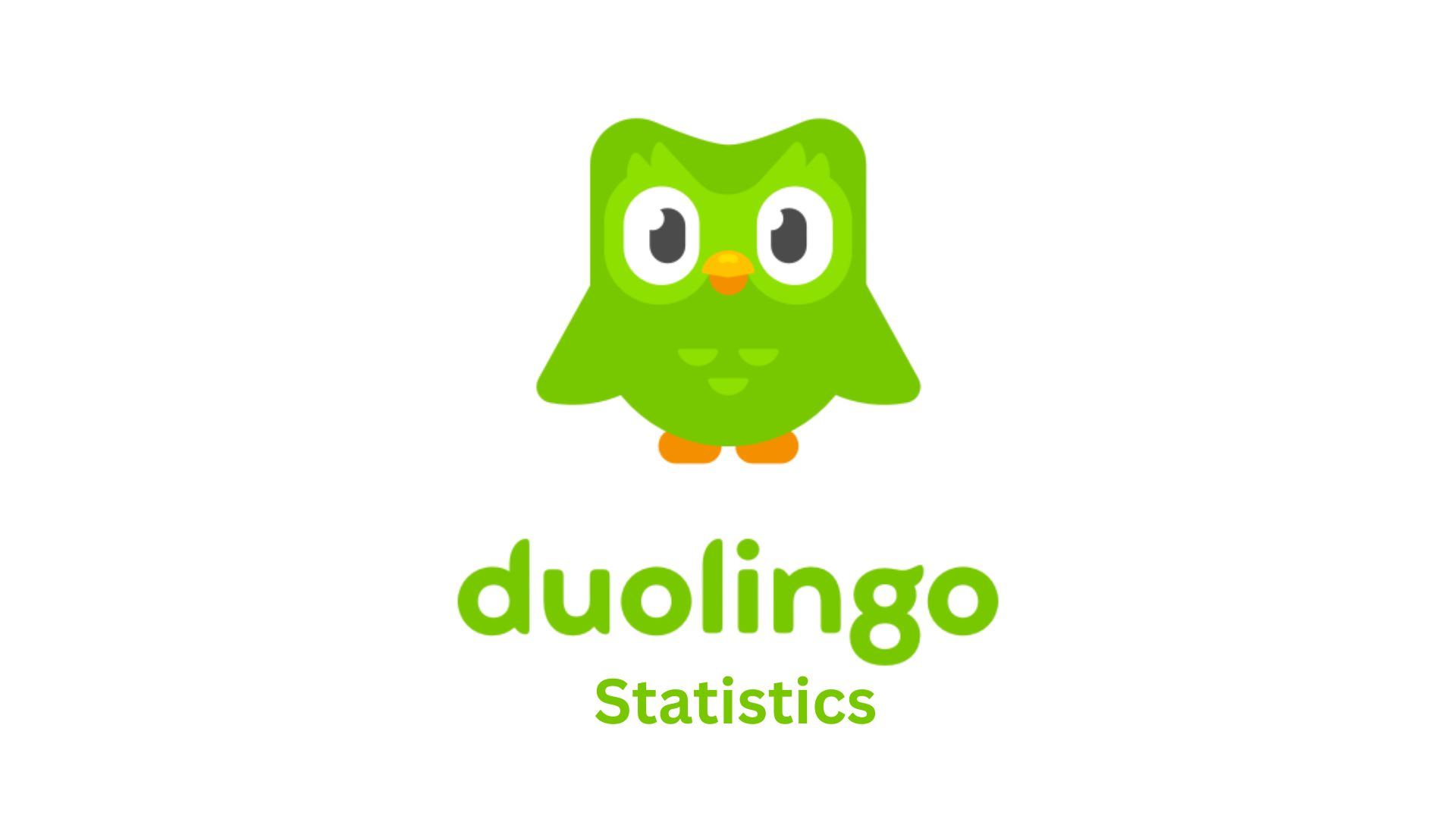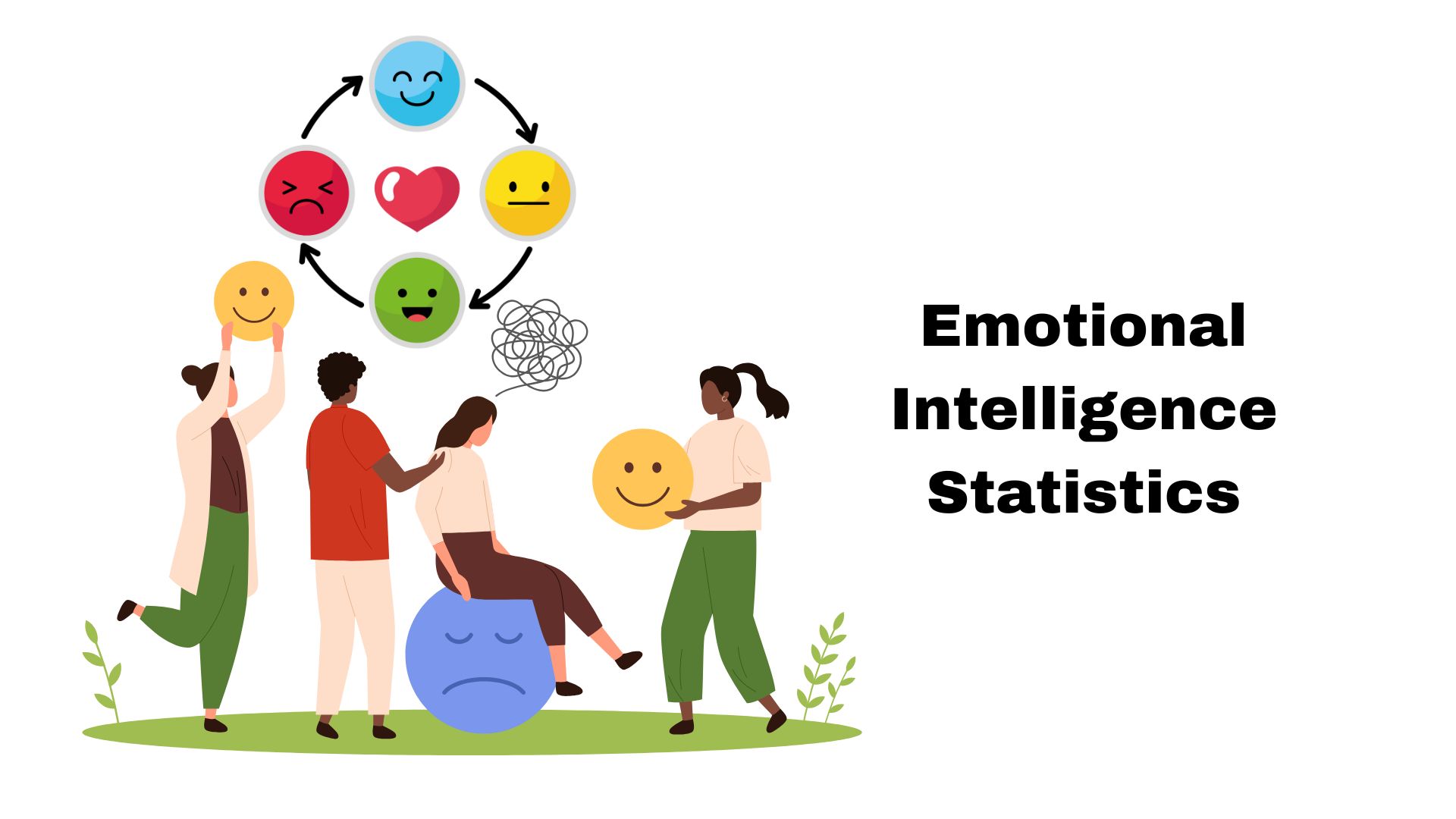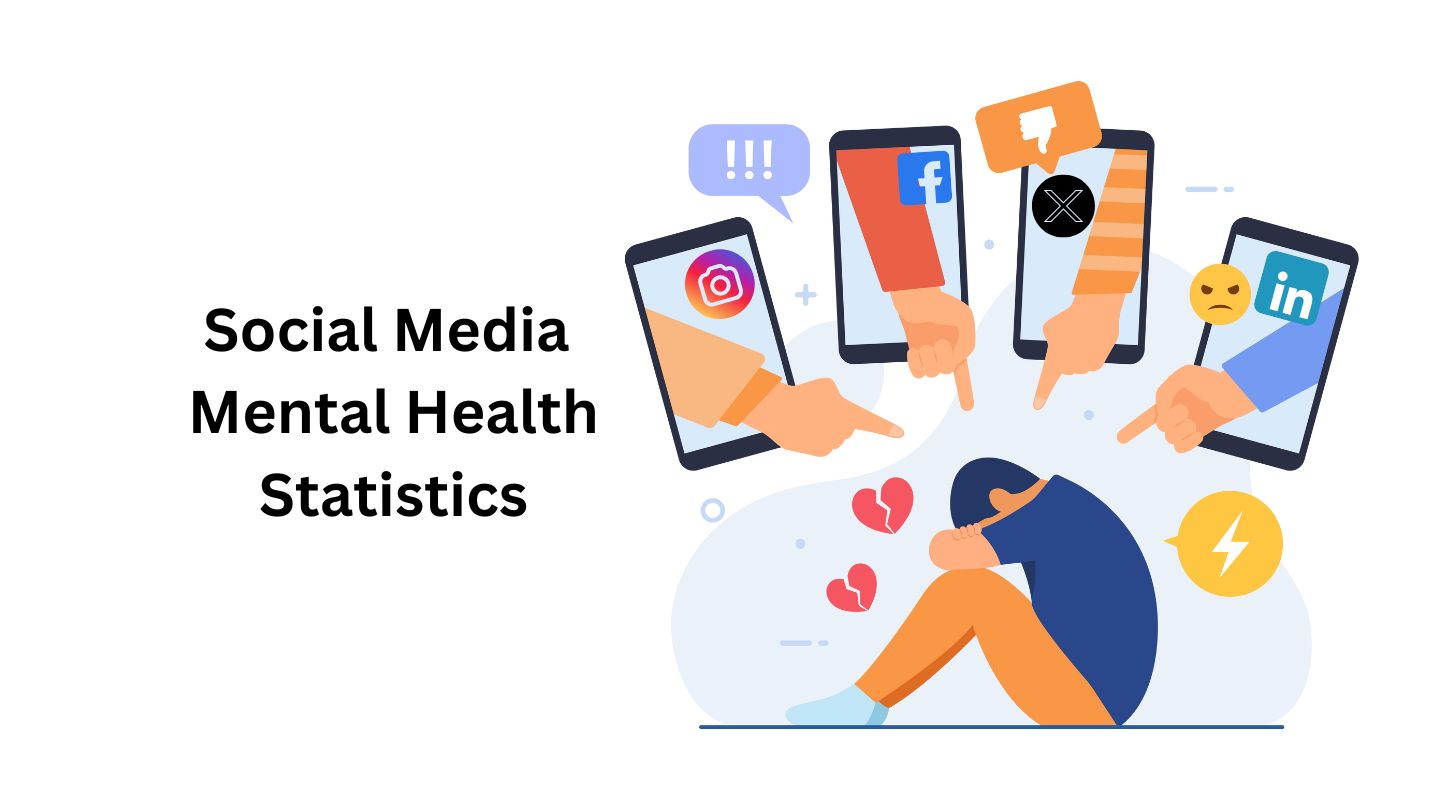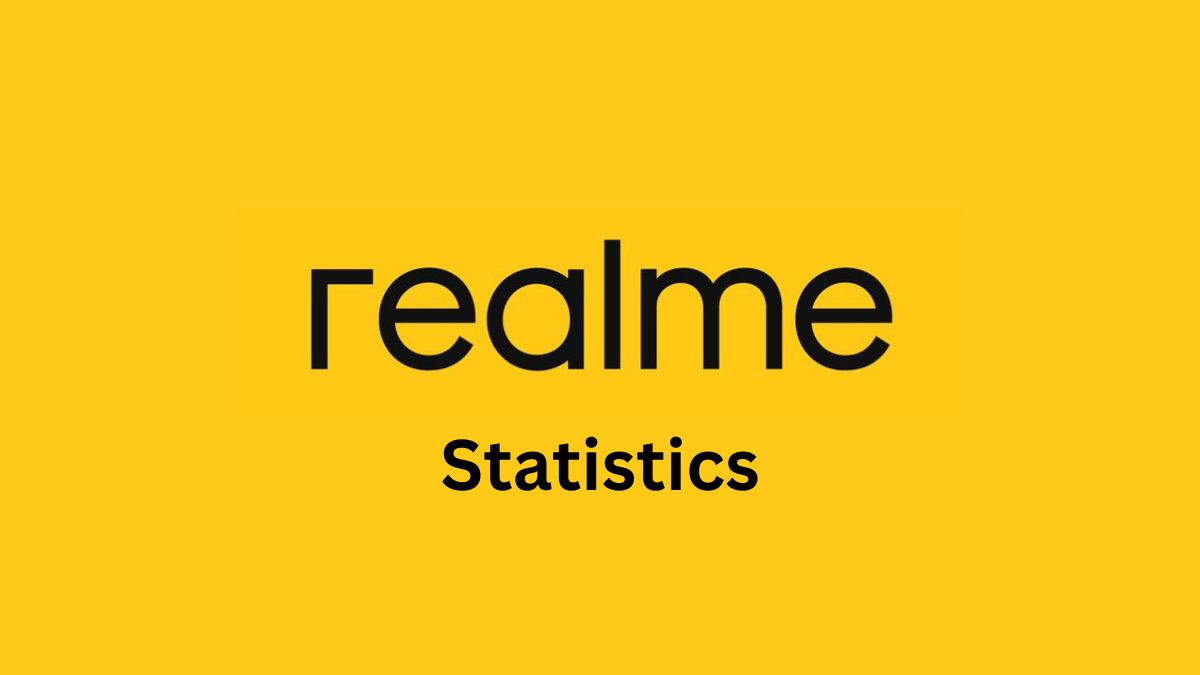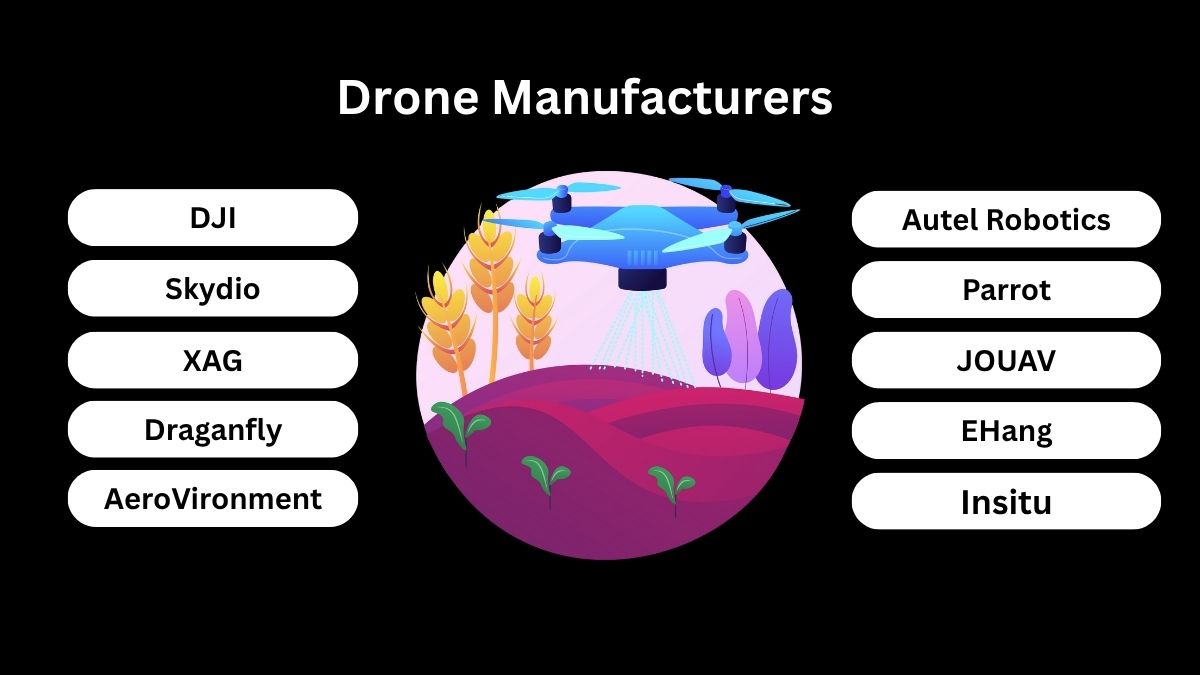Debt Collection Statistics And Facts (2025)
Updated · Jul 15, 2025
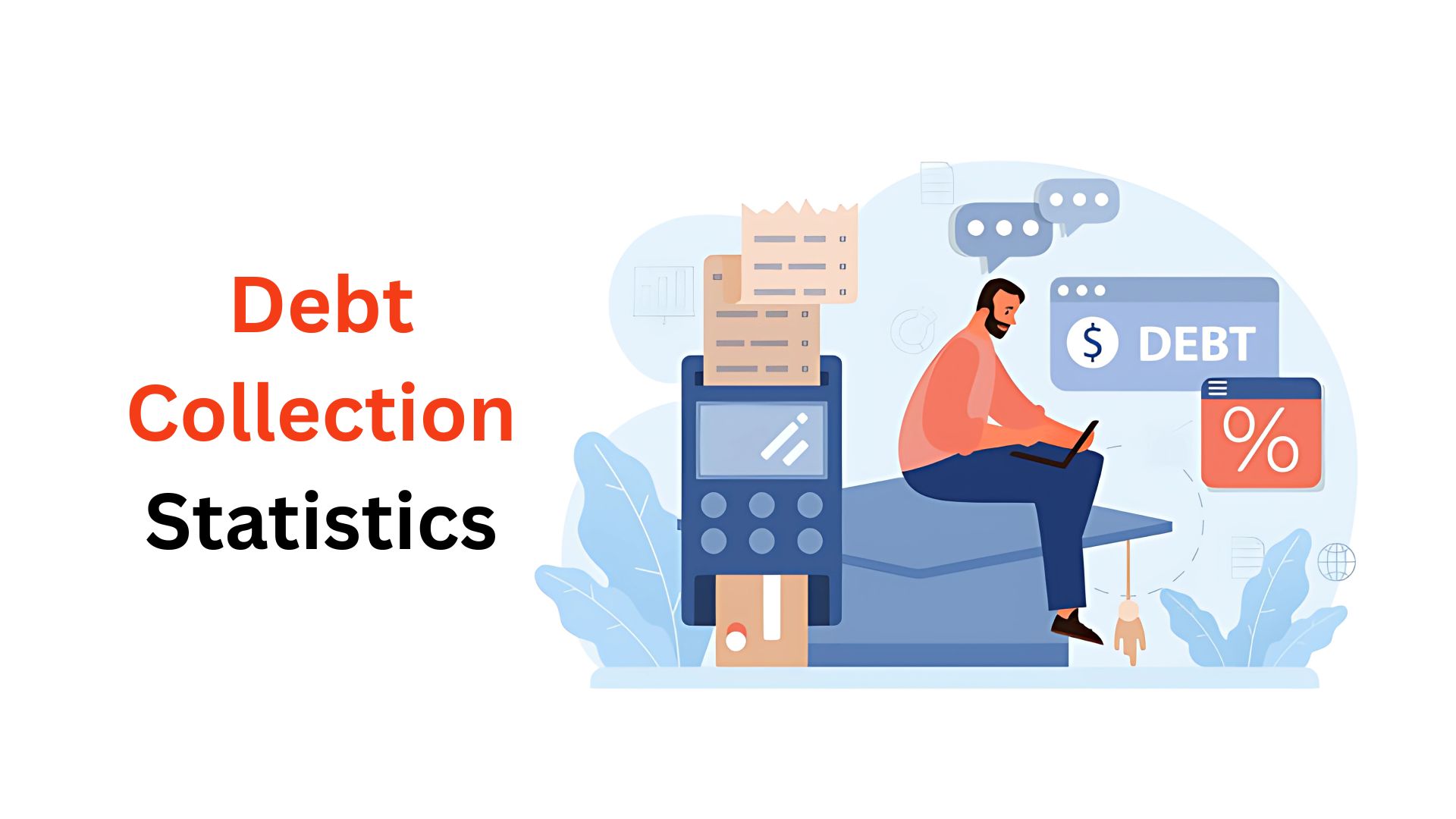
Table of Contents
- Introduction
- Editor’s Choice
- Top 20 Countries With High Public Debt
- Average Debt By Generation
- Consumer Debt Balances
- Debt Collection Industry
- Debt Collection Complaints By Company Response
- Debt Collection Agencies
- Debt Collection and Settlement Actions By Year
- Consumer vs. Debt Collection Agency Experience Statistics
- Conclusion
Introduction
Debt Collection Statistics: Debt collection holds an important position in the global financial set-up to furnish the lender with available funds, maintaining liquidity in that respect.
The landscape of debt collection in 2024 has undergone a lot of transformation on economic grounds, or by way of new technology, and changes in consumer behaviour. Here we study the latest debt collection statistics and trends that have an impact at the global level.
Editor’s Choice
- Sudan had the highest public debt-to-GDP ratio in 2024, with debt close to 300 % of GDP, signaling deep economic distress.
- Venezuela is still suffering the aftermath of hyperinflation that peaked at over 65,000 % in 2018, with the long-term debt impact yet uncertain despite signs of recovery.
- In Japan, public debt, nearly US$10 trillion, is twice its GDP, yet investor confidence remains strong from a view of stable management and sub -1% bond yields.
- In the U.S., in 2024, Baby Boomers averaged US$18,470 in non-mortgage debt, whereas Generation X had the highest average debt of all generations.
- By the end of 2023, total U.S. consumer debt was US$17.50trillion, surging from US$17.05 trillion in Q1. Credit card balances surged by US$143 billion to US$1.13 trillion.
- A large industry of US$20.2 billion employs 140,000 people in around 6,431 agencies.
- By 2023, medical debt constituted only 36% of tradelines, falling from 57% in 2022, with new credit reporting rules coming into effect.
- In 2023, the CFPB received 109,900 debt collection complaints; companies responded to 97% of them, 80% of complaints were resolved with explanations, and 0.6% with monetary relief.
- In 2023, the number of debt collection agencies decreased by 2.1%.
- Debt collection enforcement actions declined drastically from US$264.4 million in 2017 (46 actions) to US$30.3 million in 2024 (16 actions), clearly indicating a trend of decreasing enforcement.
- 37% of consumers reported collectors contacting them at least four times weekly, and 17% said they received such contacts eight or more times per week. 53% of the consumers suffered one or more erroneous attempts.
- Among consumers who were contacted in the past year for a collection, 15% stated that they were sued, while 25% also complained of threatening phone calls fostering great anxiety among consumers.
Top 20 Countries With High Public Debt
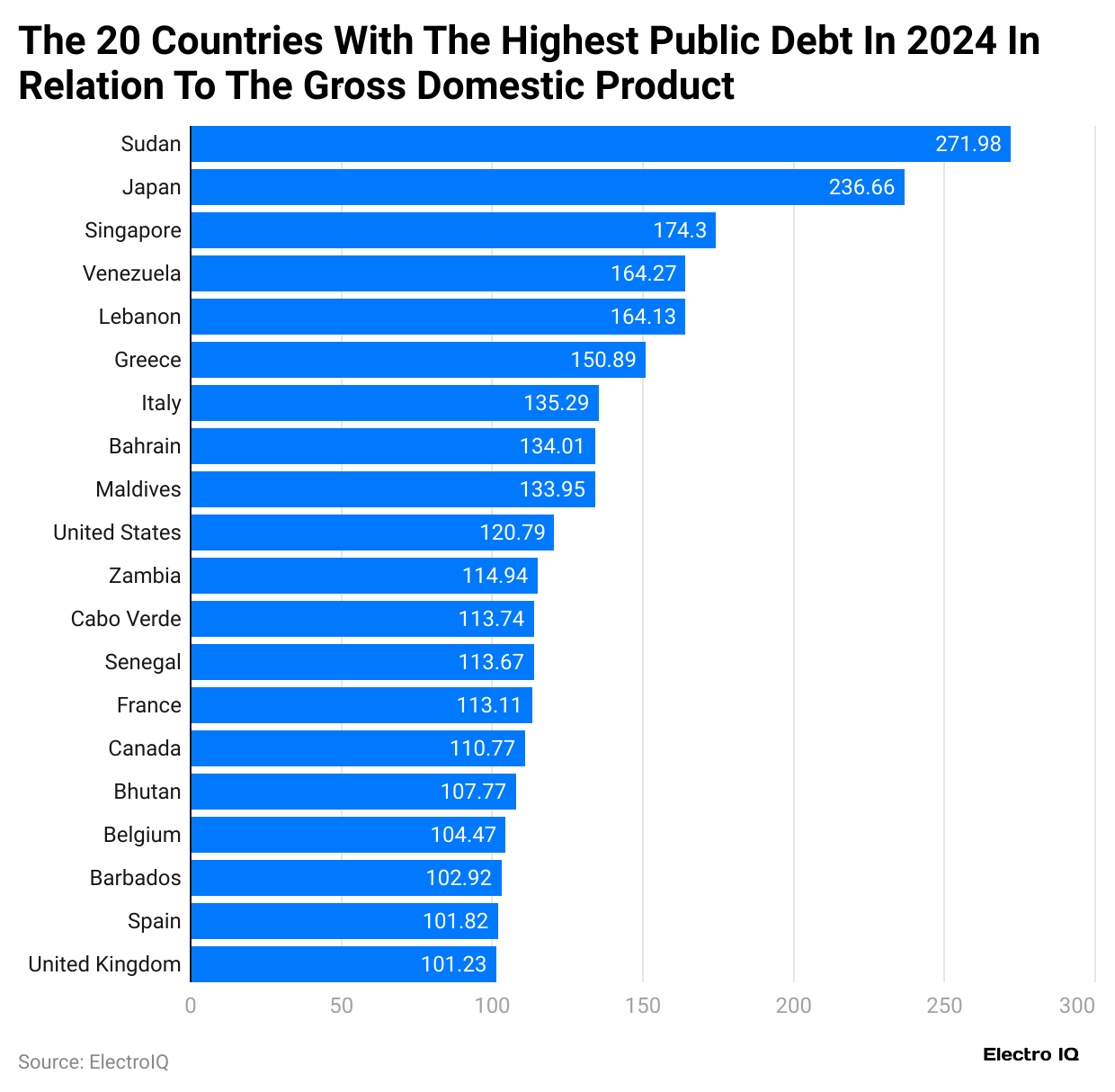
- In 2024, Sudan carried the highest public debt-to-GDP ratio, with its debt estimated at nearly three times its entire economy.
- Normally, a country bearing such high public debt would be categorised as an economically very unstable one. But, it’s not only economically struggling countries atop the charts.
- Several developed ones, including five out of seven G7 countries, also appear in the list due to their extensive national borrowing and public expenditure.
- Venezuela stands as an example of a debt crisis occasioned by long-term economic mismanagement.
- Ever since 2010, that country has been in a state of catastrophic economic collapse initiated by uncontrolled government spending and deepened by political instability and human rights violations. This led to starvation, unemployment, surges in crime, and the impetus toward the greatest migration wave in the recent history of the Western Hemisphere.
- International sanctions, especially from the U.S., were imposed against the repressive government on charges of corruption.
- Hyperinflation began to soar, peaking at over 65,000% in 2018, which at that time was the highest worldwide.
- With a government declaration that hyperinflation had ended early in 2022 and early signs of recovery showing, the lingering effect on national debt remains to be seen.
- Japan, another country with considerable national debt, has a very different situation from that of Sudan or Venezuela. Japan’s debt nearly hit US$10 trillion in 2022, with a GDP of approximately US$4.2 trillion.
- Thus, although nearly half of Japan’s tax revenue goes to debt servicing, yields on 10-year Japanese government bonds remain below 1%, which would imply relatively strong investor confidence, perhaps derived from Japan’s strong institutions and steady economic governance, even with outstanding levels of debt.
Average Debt By Generation
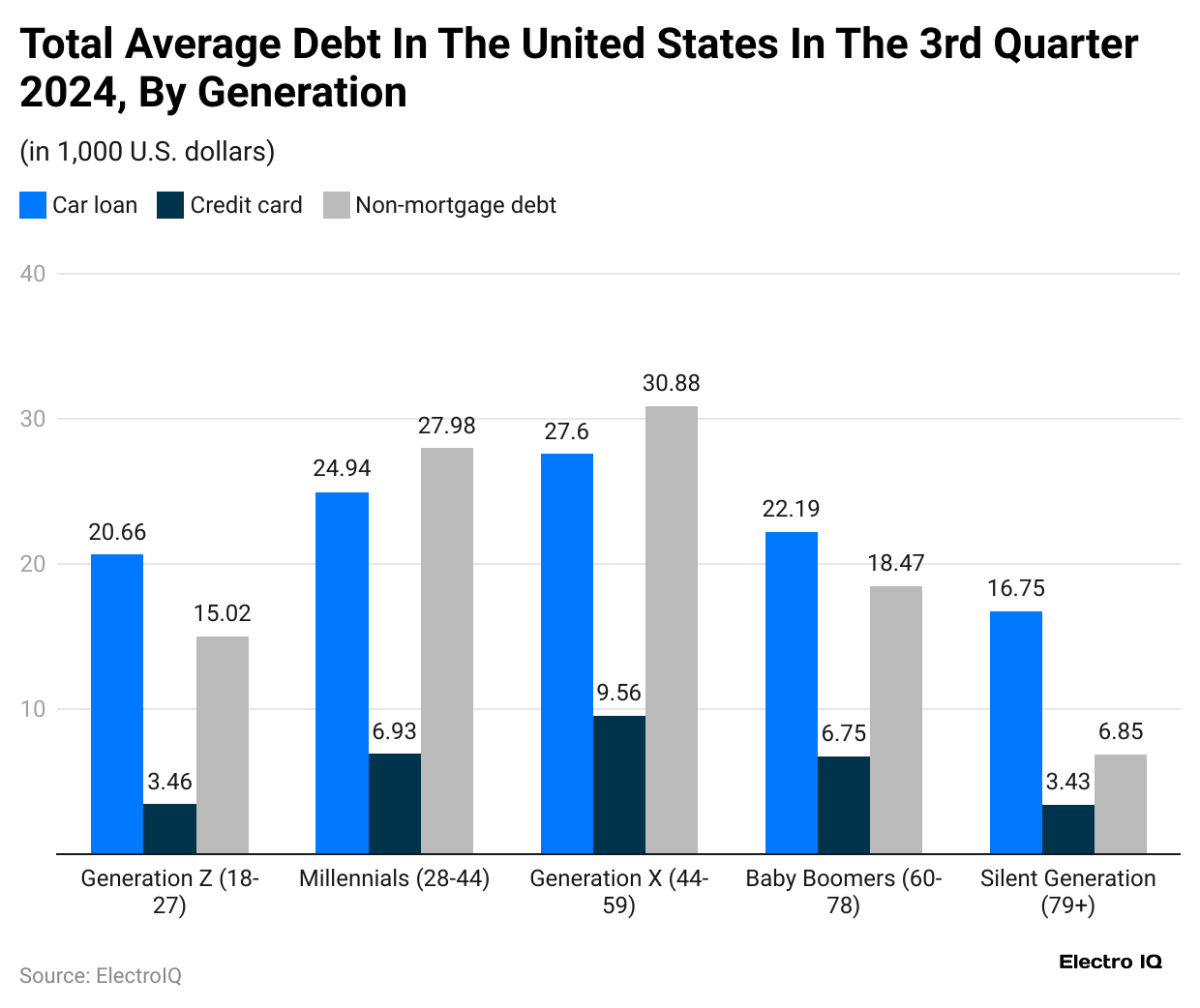
- In 2024, a Baby Boomer in the U.S. was carrying nearly US$18,470 in non-mortgage debt. Levels of debt, however, greatly vary in each generation.
- Generation X carried the highest average amount of debt, implying that they most likely have several financial burdens, such as mortgages, education costs, or support for family members.
- Another interesting fact is that the Silent Generation had the lowest average amount of debt, meaning they probably did borrow less in retirement and developed a more conservative approach toward money through the years.
Consumer Debt Balances
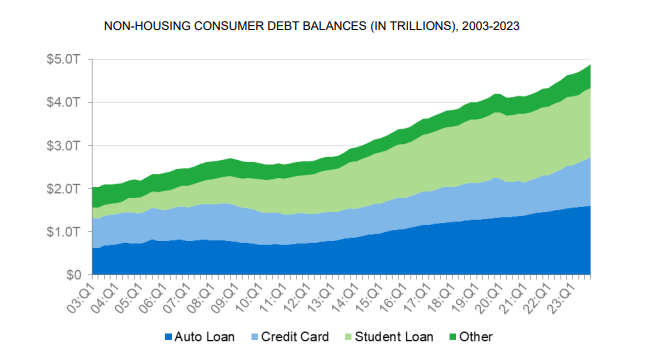
- According to Consumer Reports, debt collection statistics show that in 2023, consumer debt in the U.S. kept growing, establishing a record every single quarter. Starting at a level of US$17.05 trillion in Q1, the total sum of consumer debt increased, ending at US$17.50 trillion by the end of the year.
- Mortgage debt was a major contributor to this increase, having grown by US$329 billion over the year.
- Non-housing debt, meanwhile, went up by US$250 billion. Half of this growth in non-housing debt was credited to credit card debt, which increased by US$143 billion to US$1.13 trillion by December 2023.
- Auto loan debt also grew by US$55 billion, reaching US$1.61 trillion, and student loan balances saw a slight increase of US$6 billion, taking the total up to US$1.60 trillion.
- These rising debt levels, less than favorably, can be partially accounted for by inflation and interest rates going up.
- Consumer prices had increased by 3.2 % from December 2022 to December 2023, slower than the pace of 6.5 % between December 2021 and December 2022.
- The Federal Reserve raised the funds rate upward in the first half of 2023 until it reached around 5.50 % in July, where it remained for the rest of the year.
Debt Collection Industry
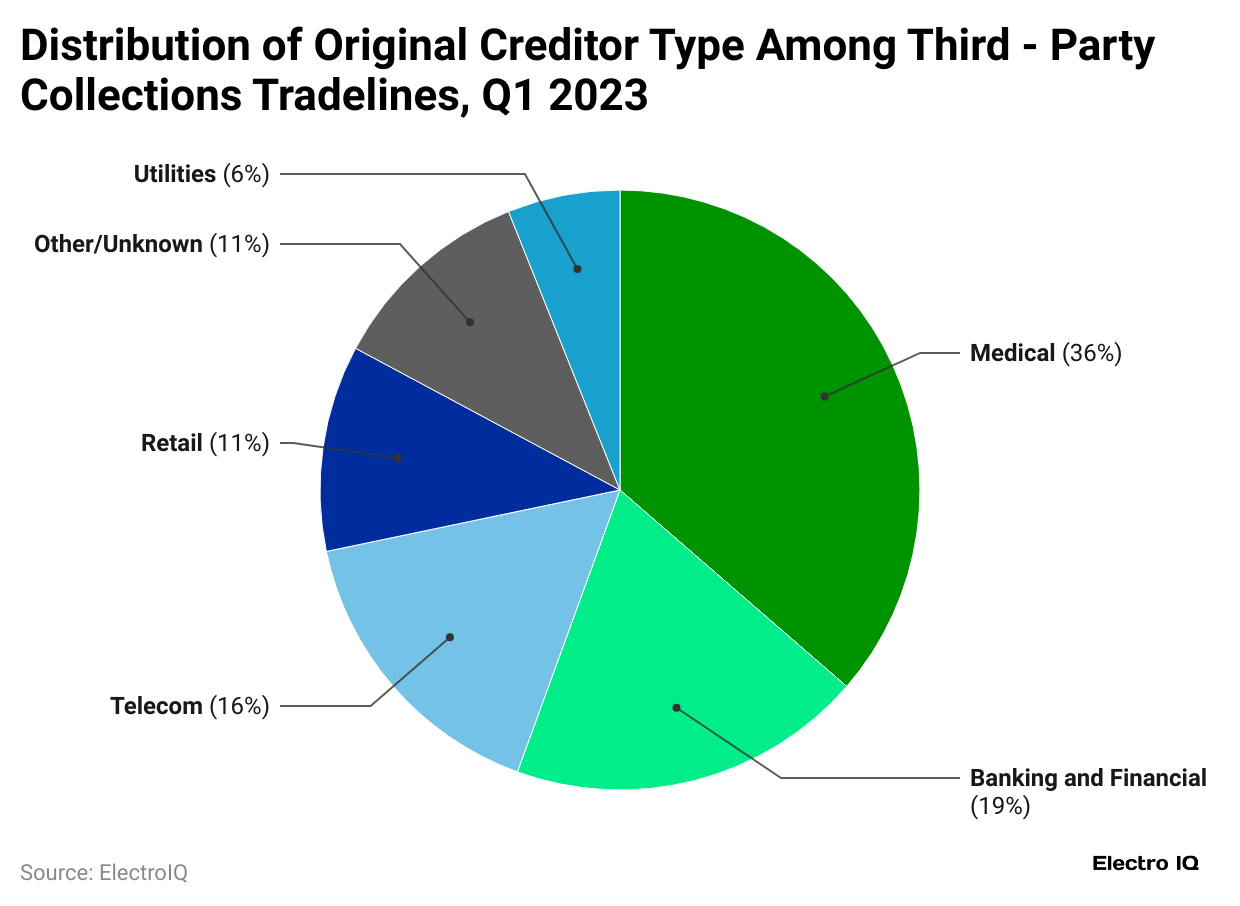
- The debt collection industry spans the length and breadth of the United States, affecting millions of individuals.
- According to the most recent estimates, third-party debt collection is worth US$20.2 billion as a collective entity with around 140,000 people working in it and 6,400-plus agencies in operation in the country.
- Data from the Consumer Financial Protection Bureau’s Consumer Credit Panel, analysing a national sample of de-identified credit records, shows that, as of Q1 2023, one in five persons recorded had a collection account.
- Medical debts are the most common kind of collections listed on a credit report.
- They account for 36 % of third-party collection tradelines; this shows a marked decrease from 57 % in 2022.
- The decrease shall likely be attributed to a big change in April 2023 when the major credit reporting agencies Equifax, Experian, and TransUnion decided to remove the unpaid medical debts below US$500 from credit records.
- Other common types of collections may result from the loss of debts owed to banks, telecommunications, and retail companies, among others.
- Not all debt is captured by these statistics, because some may be underreported when collected in-house by creditors and therefore do not appear under third-party collection activity on credit reports.
Debt Collection Complaints By Company Response
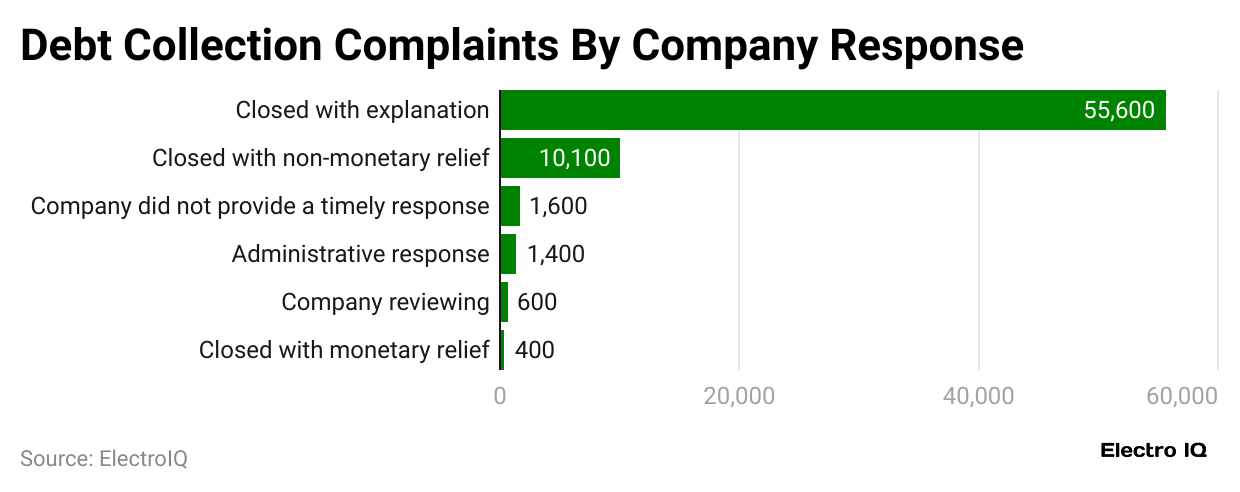
- In 2023, the Debt Collection Division of the Consumer Financial Protection Bureau (CFPB) received about 109,900 complaints, of which it forwarded about 69,600, or 63 %, to the companies for review and response.
- Approximately 28 % were forwarded to other agencies for their consideration, while 9 % were non-actionable.
- Less than 0.1 % of these complaints were still pending either with the consumer or the CFPB, as of March 1, 2024.
- Some 97 % of complaints forwarded to companies for consideration received a response; about 80 % of these were resolved with an explanation.
- Around 15 % resulted in some form of non-monetary relief, 0.6 % in monetary relief, and 2 % in an administrative response. While 0.8 % of cases were under company review, about 2 % saw companies responding late.
Debt Collection Agencies
- As per Businessdasher, debt collection statistics state that debt collection agencies in the United States have been slowly decreasing in numbers and facing revenue changes.
- In 2023, a total of 6,431 active debt collection agencies were operating across the country, representing a drop of roughly 2.1% from the prior year.
- Between 2018 and 2023, the sector witnessed an average annual shrinkage of 2.1% in the business count.
- About 37% of revenues are driven by financial services, thereby making it the leading contributor to collection agency revenues.
- Geographically, New York is at 725 agencies; California is second, almost neck and neck with 706; and Texas, at 525, represents another locus of concentration in the industry.
Debt Collection and Settlement Actions By Year
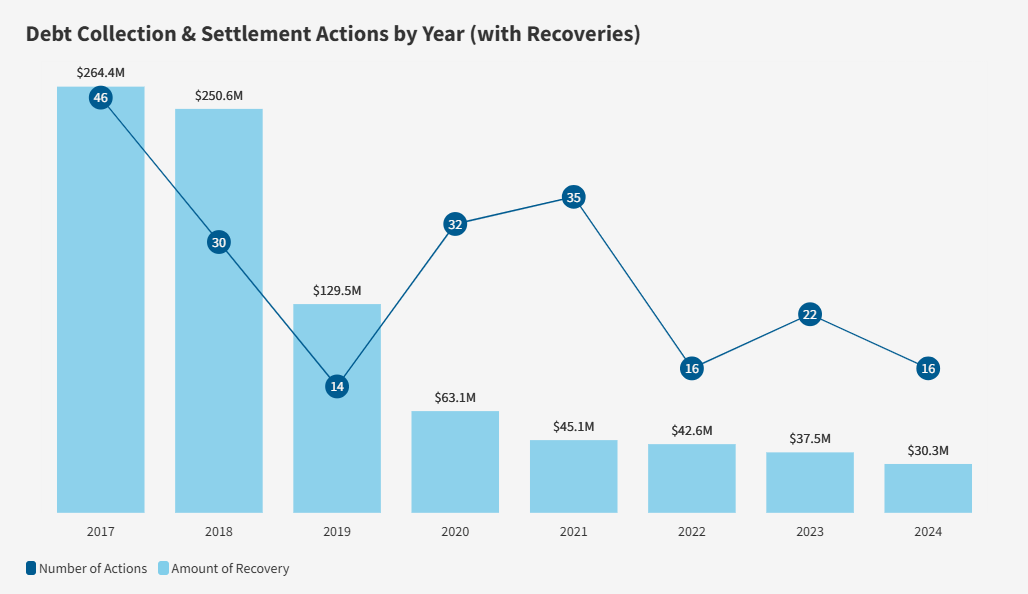
- Between 2017 and 2024, recoveries in the debt collection setting and enforcement actions have had opposing general trajectories.
- In 2017, recoveries reached US$264.4 million in 46 actions; therefore, this was the high for both the period in terms of recovery and the number of actions.
- In 2018, there were recoveries of US$250.6 million in 30 actions, halfway down from the previous period. 2019 witnessed a steep drop in the total sum of recoveries to US$129.5 million as the total number of actions dwindled to 14.
- The year 2020 came with a recovery of US$63.1 million, while in the number of actions, there was an increase to 32.
- Since 2021, however, both recoveries and enforcement actions have been generally declining. In 2021, about 35 recovery actions with a sum of US$45.1 million were collected, while in 2022, the recovery amount reduced to US$42.6 million with just 16 actions.
- There were US$37.5 million recoveries with 22 actions in 2023, while they further declined to US$30.3 million through 16 actions recorded in 2024.
- The data encapsulates a steady decline in both the total financial recovery and the enforcement activity frequency in the debt collection space in the past eight years.
Consumer vs. Debt Collection Agency Experience Statistics
- The average consumer has negative experiences with debt collection agencies, much due to incessant attempts at contacting.
- Recent statistics revealed that 37% of consumers said debt collectors contacted them at least four times a week, while 17% said they had been contacted even more frequently: eight times or more weekly.
- More than 25% of consumers reported being threatened on the phone by collectors. Needless to say, that just helps to add more stress to the already anxiety-ridden situation.
- Turning back to accuracy, 53% of those contacted about debts at least once in the past year believed at least one attempt to collect was made in error.
- Anything above 36% of harassment at inappropriate times only adds to consumer dissatisfaction.
- For the greater ill, 15% of those who had a debt in collection in the past year said they were sued by a debt collector.
- Such statistics embody the challenges and constant pressure many consumers are put through throughout a debt collection journey.
Conclusion
Debt Collection Statistics: Navigating an intricate landscape marked by escalating global debt levels, technological innovations, and regional economic hurdles, the debt collection sector of 2024 looks into a landscape marked with rising global debt levels, technological innovations, and regional economic challenges.
Accordingly, the countries and financial institutions turn their attention to realising efficient, ethical, and technologically supported debt recovery processes. Such stakeholders now must stay current and agile to identify risks and opportunities as they emerge in this changed business.
FAQ.
As of 2024, the third-party debt collection industry in the United States is valued at about US$20.2 billion and provides employment to around 140,000 workers through 6,431 agencies. Agency count dropped by 2.1% this year compared with the previous one. Nonetheless, the industry is crucial to the financial sector.
In 2023, consumer debt hit an all-time high of US$17.5 trillion, compared to US$17.05 trillion in Q1. The biggest contributors to this were mortgage debt (+US$329 billion), credit card debt (+US$143 billion, totalling US$1.13 trillion), and auto loans (+US$55 billion). The inflationary pressures and high interest rates, which peaked at 5.5% in July 2023, were held responsible for such rises. Generation X had the highest average non-mortgage debt, while Baby Boomers had about the lowest, with an average of US$18,470.
Few experiences are as dismal for consumers as hanging up on debt collectors. About a third (37%) of consumers reported being called four or more times a week in 2023, and 17% were called eight or more times a week. Over one-fourth of consumers said that the debt collectors sometimes threatened them, and 53% said that at least one attempt to collect debt was made in error. 15% of consumers reported being sued over a debt, while many were called during inappropriate times, contributing to increased tension and dissatisfaction.
Enforcement actions and financial recoveries from debt collection have significantly declined since 2017. A sum of US$264.4 million was recovered in 46 actions in that year, whereas in 2024, this amount became just US$30.3 million from 16 actions.
In 2023, the CFPB received about 109,900 complaints, 63% of which were forwarded to companies. 97% of those companies responded: 80% of the complaints were resolved through explanation, 15% received non-monetary relief, and just 0.6% of the complaints received monetary compensation. Very few complaints were not resolved by early 2024.

Joseph D'Souza founded ElectroIQ in 2010 as a personal project to share his insights and experiences with tech gadgets. Over time, it has grown into a well-regarded tech blog, known for its in-depth technology trends, smartphone reviews and app-related statistics.





